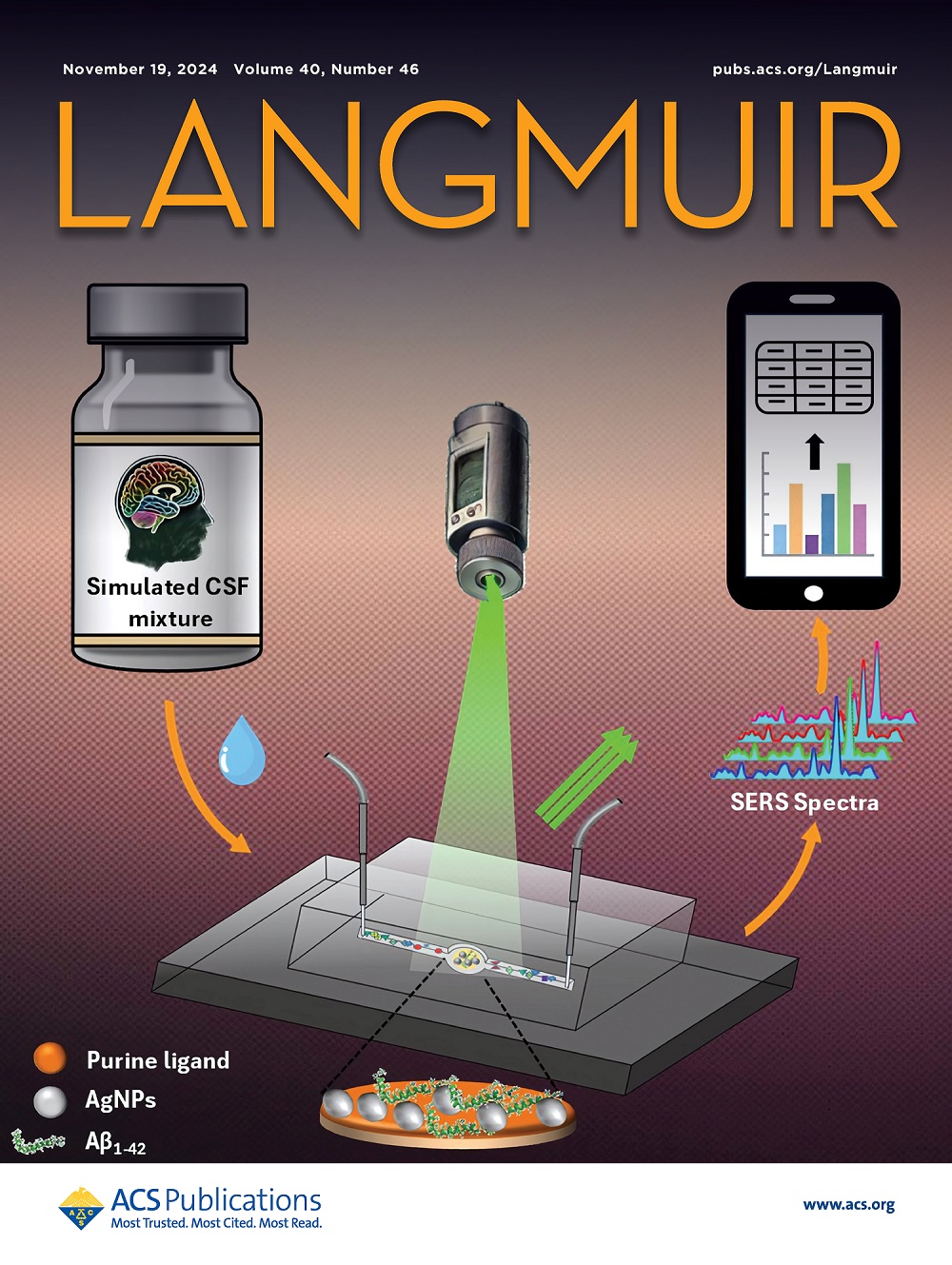Multiscale Insights into the Counterion-Mediated Self-Assembly of CTA+ Micelles: Bridging Molecular Interactions and Mesoscopic Morphology.
IF 3.7
2区 化学
Q2 CHEMISTRY, MULTIDISCIPLINARY
引用次数: 0
Abstract
As a cationic surfactant, the diverse self-assembly behaviors of cetyltrimethylammonium bromide (CTA+) are influenced by the structure and type of counterions. However, related issues have not been systematically studied. Therefore, this paper employs multiscale simulations using density functional theory and coarse-grained molecular dynamics to simulate the interaction and dynamic behavior between CTA+ and different aromatic counterions. The results show that the stronger the hydrophobicity of the hydrophobic group of the counterion, the easier it is for the counterion to "insert" into the micelle, thus effectively shielding the electrostatic repulsion between the surfactant headgroups. The arrangement of CTA+ headgroups on the micelle surface tends to be hexagonal with closest packing. The reason why sulfonate counterions promote the growth of wormlike micelles more easily than carboxylate counterions is that the stronger interaction between the sulfonate group and the quaternary ammonium contributes to the more effective shielding of electrostatic repulsion and facilitates micelle growth. Additionally, we found that the stability of the CTA+-BSA micelle system with sulfonate counterions is better than that of the CTA+-BzO system with carboxylate counterions. The research results deepen the basic understanding of the counterion-mediated micellization process and provide actionable guidelines for the engineering design of viscoelastic surfactants.反离子介导的CTA+胶束自组装的多尺度洞察:桥接分子相互作用和介观形态。
作为一种阳离子表面活性剂,十六烷基三甲基溴化铵(CTA+)的各种自组装行为受到反离子结构和类型的影响。然而,相关问题尚未得到系统的研究。因此,本文采用密度泛函理论和粗粒度分子动力学的多尺度模拟方法,模拟了CTA+与不同芳香反离子的相互作用和动力学行为。结果表明,反离子的疏水基的疏水性越强,反离子越容易“插入”到胶团中,从而有效屏蔽表面活性剂头基之间的静电斥力。CTA+头基团在胶束表面呈六边形排列,排列紧密。与羧酸盐反离子相比,磺酸盐反离子更容易促进虫状胶束的生长,这是因为磺酸基与季铵之间的相互作用更强,有助于更有效地屏蔽静电斥力,促进胶束生长。此外,我们发现含有磺酸盐的CTA+-BSA胶束体系的稳定性优于含有羧酸盐的CTA+-BzO胶束体系。研究结果加深了对反介导胶束过程的基本认识,为粘弹性表面活性剂的工程设计提供了可操作的指导。
本文章由计算机程序翻译,如有差异,请以英文原文为准。
求助全文
约1分钟内获得全文
求助全文
来源期刊

Langmuir
化学-材料科学:综合
CiteScore
6.50
自引率
10.30%
发文量
1464
审稿时长
2.1 months
期刊介绍:
Langmuir is an interdisciplinary journal publishing articles in the following subject categories:
Colloids: surfactants and self-assembly, dispersions, emulsions, foams
Interfaces: adsorption, reactions, films, forces
Biological Interfaces: biocolloids, biomolecular and biomimetic materials
Materials: nano- and mesostructured materials, polymers, gels, liquid crystals
Electrochemistry: interfacial charge transfer, charge transport, electrocatalysis, electrokinetic phenomena, bioelectrochemistry
Devices and Applications: sensors, fluidics, patterning, catalysis, photonic crystals
However, when high-impact, original work is submitted that does not fit within the above categories, decisions to accept or decline such papers will be based on one criteria: What Would Irving Do?
Langmuir ranks #2 in citations out of 136 journals in the category of Physical Chemistry with 113,157 total citations. The journal received an Impact Factor of 4.384*.
This journal is also indexed in the categories of Materials Science (ranked #1) and Multidisciplinary Chemistry (ranked #5).
 求助内容:
求助内容: 应助结果提醒方式:
应助结果提醒方式:


